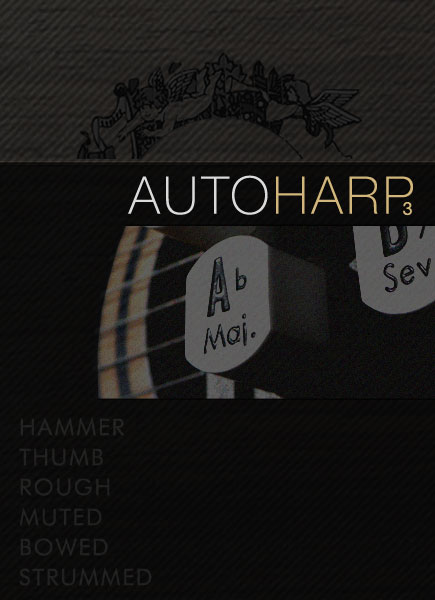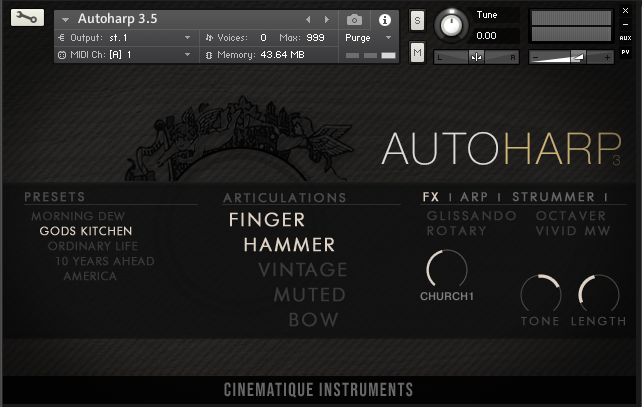 |
|
||||||||
|
This is what you get
|
Organic Sound We focused on capturing the notes in a very realistic and organic way. We recorded all main articulations with a cool condenser in four round robins and three velocity layers. Glissando The given glissando mode is unique and perfectly fits the sound of an Autoharp. Strumming Engine This very realistic strumming companion provides strumming notes and dead notes. A unique feature is the Strumming Speed Slider, which simulates the speed of the hand. Eight Reverb Types Besides several different reverb sizes, you get special types such as "Infinite" and "Ghost". |
Many Articulations We recorded many different and unique articulations to give you a broad spectrum of sound possibilities. Each of them is useful for a different kind of musical style:
|

Listen to some audio demos
| Movement | Till Metzner |
| Follow Your Mind | Adi Goldstein |
| Tendency | Ege |
| Cacce | Eric van Gent |
| Spiked Glass | Joel Frias |
What is an Autoharp? The Autoharp was invented at the end of the 19th century by Charles F. Zimmermann, a German immigrant in Philadelphia. It is a stringed instrument and, despite its name, the Autoharp is not a harp. In fact, this instrument is a chorded zither with 36 steel strings stretched over a soundbox. It has a series of chord bars that, when pushed down, mute all the strings other than those that form the desired chord. By doing so, you can easily play chords. It's a perfect instrument to give your music a subtle highlighted shape. The Version 3 Our latest version, Autoharp version 3, is more than just an update of the old version. Instead, we've re-recorded almost everything, replaced old sounds, and implemented a whole host of new features in Autoharp 3. So now you can sound even more realistic and achieve more complex results. The Update 3.5 Update 3.5 has only a few changes. We kept all essential features, removed a few bugs, and optimized the design. |
The Walkthrough

